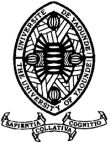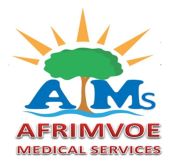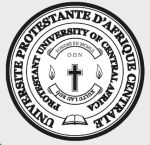Hemorrhagic Brainstem Cavernous Malformation : An Uncommon Cause of Multiple Cranial Nerve Palsies in an ENT Evaluation
Le Cavernome Hémorragique du Tronc Cérébral : Une Cause Rare de Paralysie Multiple des Nerfs Crâniens en Consultation ORL
DOI:
https://doi.org/10.5281/hra.v3i1.6293Keywords:
Multiple palsy, cranial nerves, cerebral cavernous malformations, ENT consultation, CameroonAbstract
ABSTRACT
Multiple cranial nerve palsies represent a diagnostic challenge in ENT consultations due to the diversity of possible etiologies. We describe an extremely rare cause of multiple cranial nerve lesions: cerebral cavernous malformation (CCM) hemorrhage of the brain stem, a capillary-type vascular malformation whose prevalence in the world population is less than 0.5%. To our knowledge, no cases have yet been reported in Cameroon. A 33-year-old female presented with paresthesias of the right hemiface, disabling complete dysphagia, and rapidly progressing left ptosis. Clinical examination revealed severe swallowing disorders with aspiration, paralysis of cranial nerves III, IV, V, VI, IX and X, hypoesthesia of the right hemiface and upper limb, and cerebellar syndrome. Brain MRI revealed a recent hemorrhagic left lateral pontine CCM, 2.5 cm in diameter, associated with other multiple cavernous lesions in the left frontal, right occipital, right and left cerebellar hemispheres. Cranial nerve palsies are frequent findings in ENT consultations. When they are multiple, they call for meticulous clinical evaluation of all cranial nerves during ENT and cervicofacial examinations, and a complete cerebral imaging work-up. Cerebral cavernous malformations, which are rare and potentially fatal vascular malformations, can be one etiology. Joint follow-up and collaboration between management teams (neurology, ENT, and neurosurgery) for this type of patient is essential.
RÉSUMÉ
Les paralysies multiples des nerfs crâniens représentent un défi diagnostique en consultation ORL du fait de la diversité des étiologies possibles. Nous décrivons une cause extrêmement rare d’atteinte multiple des nerfs crâniens : le cavernome hémorragique du tronc cérébral qui est une malformation vasculaire de type capillaire dont la prévalence dans la population mondiale est inférieure à 0,5%. Au Cameroun, aucun cas n'a encore été rapporté à notre connaissance. Patiente de 33 ans présentant des paresthésies de l’hémiface droite, une dysphagie complète invalidante et un ptosis gauche d’installation rapidement progressive. L’examen clinique a mis en évidence des troubles sévères de la déglutition avec des fausses routes, une paralysie des nerfs III, IV, V, VI, IX et X, une hypoesthésie de l’hémiface et du membre supérieur droit ainsi qu’un syndrome cérébelleux. L’IRM cérébrale a révélé la présence d’un cavernome hémorragique récent pontique latéral gauche de 2,5 cm de diamètre associé à de multiples autres lésions cavernomateuses au niveau frontal gauche, occipital droit, hémisphériques cérébelleux droit et gauche. Les paralysies des nerfs crâniens sont fréquentes en consultation Oto-rhino-laryngologique, lorsqu’elles sont multiples, elles doivent obliger à une évaluation clinique minutieuse de tous les nerfs crâniens lors de l’examen ORL et cervico facial et à un bilan imagerique cérébral complet. Les cavernomes cérébraux qui sont des malformations vasculaires rares et potentiellement mortelles peuvent en être une étiologie. Le suivi conjoint et la collaboration entre les équipes de prise en charge (neurologie, ORL-CCF et neurochirurgie) de ce type de patients est primordiale.l
References
Beal MF. Multiple cranial-nerve palsies: A diagnostic challenge. N Engl J Med 1990; 322:461-3.
Mehta MM, Garg RK, Rizvi I, Verma R, Goel MM, Malhotra HS, Malhotra KP, Kumar N, Uniyal R, Pandey S, Sharma PK. The Multiple Cranial Nerve Palsies: A Prospective Observational Study. Neurol India. 2020 May-Jun;68(3):630-635. doi: 10.4103/0028-3886.289003. PMID: 32643676.
Keane JR. Multiple cranial nerve palsies: Analysis of 979 cases. Arch Neurol 2005 ;62 :1714-7.
Otten P, Pizzolato GP, Rilliet B, Berney J. À propos de 131 cas d’angiomes caverneux (cavernomes) du SNC, repérés par l’analyse rétrospective de 24 535 autopsies. Neurochirurgie 1989;35:82-3.
Russel DS, Rubenstein LJ. In: Pathology of tumors of the nervous system. Baltimore: Williams and Wilkins; 1989. p. 730-6.
Rigamonti D, Drayer BP, Johnson PC, Hadley MN, Zabramski J, Spetzler RF. The MRI appearance of cavernous malformations (angiomas). J Neurosurg 1987; 67:518-24.
Sissoko A, Coulibaly T, Sy D, Hassana et al., Guinto C. Epidemiology,clinical presentation and outcome of brainstem spontaneous hemorrhage at CHU Point G. Health Sci Dis. 2021;22(9):98‑102.
Lena G, Ternier J, Paz-Paredes A, et al. — Cavernomes du système nerveux central chez l’enfant. Neurochir,2007, 53, 223-237.
Labauge P, Parker F, Chapon F, Tournier-Lasserve E. Cavernomes du système nerveux central. EMC - Neurol. janv 2008;5(1):1‑7.
Houtteville JP. Brain Cavernoma: A Dynamic Lesion. Surg Neurol. déc 1997;48(6):610‑4.
Robinson JR, Awad IA, Little JR. Natural history of the cavernous angioma. J Neurosurg 1991; 75:709–14.
Rigamonti D. Clinical features, imaging and diagnostic work-up. In: Cavernous Malformations of the Nervous System. Cambridge University Press. 2011. p. 49‑102.
Robinson Jr. JR, Awad IA, Magdinec M, Paranandi L. Factors predisposing to clinical disability in patients with cavernous malformations of the brain. Neurosurgery 1993 ;32 :730-5.
Gazzaz M, Sichez JP, Capelle L, Fohanno D. Saignements itératifs d’un angiome caverneux sous traitement hormonal. Neurochirurgie 1999; 45:413-6.
Safavi-Abbasi S, Feiz-Erfan I, Spetzler RF, Kim L, Dogan S, Porter RW, et al. Hemorrhage of cavernous malformations during pregnancy and in the peripartum period: causal or coincidence? Case report and review of the literature. Neurosurg Focus 2006;21: E12.
Shkoukani A, Srinath A, Stadnik A, Girard R, Shenkar R, Sheline A, Dahlem K, Lee C, Flemming K, Awad IA. COVID-19 in a Hemorrhagic Neurovascular Disease, Cerebral Cavernous Malformation. J Stroke Cerebrovasc Dis. 2021 Nov;30(11):106101. doi: 10.1016/j.jstrokecerebrovasdis.2021.106101. Epub 2021 Sep 8. PMID: 34520969; PMCID: PMC8424017.
Frisullo G, Scala I, Bellavia S, Broccolini A, Brunetti V, Morosetti R, Della Marca G, Calabresi P. COVID-19 and stroke: from the cases to the causes. Rev Neurosci. 2021 Feb 15;32(6):659-669. doi: 10.1515/revneuro-2020-0136. PMID: 33583167.
Zabramski JM, Wascher TM, Spetzler RF, Johnson B, Golfinos J, Drayer BP, et al. The natural history of familial cavernous malformations: results of an ongoing study. J Neurosurg 1994; 80:422-32.
Arslan A, Ozsoy KM, Olguner SK, Acik V, Istemen I, Arslan B, Gezercan Y, Okten AI. Surgical Results of Brainstem Cavernous Malformation Haemorrhage. Turk Neurosurg. 2020;30(5):768-775. doi: 10.5137/1019-5149.JTN.31207-20.2. PMID: 32865224.
Haasdijk R, Cheng C, Maat-Kievit A, et al.— Cerebral cavernous malformations: from molecular pathogenesis to genetic counselling and clinical management.Euro J Hum Genet, 2012, 20, 134-140.
Downloads
Published
How to Cite
Issue
Section
License
Copyright (c) 2024 Ngo Nyeki Adèle-Rose, Ngarka Leonard, Mossus Yannick, Nganso Tatiana, Mboua Veronique, Meva'a Roger, Atanga Léonel, Ngaba Mambo Olive, Nfor Leonard, Mindja David, Djomou Francois, Njamnshi Alfred, Njock Richard

This work is licensed under a Creative Commons Attribution-NonCommercial-NoDerivatives 4.0 International License.
Authors who publish with this journal agree to the following terms:
- Authors retain copyright and grant the journal right of first publication with the work simultaneously licensed under a Creative Commons Attribution License CC BY-NC-ND 4.0 that allows others to share the work with an acknowledgement of the work's authorship and initial publication in this journal.
- Authors are able to enter into separate, additional contractual arrangements for the non-exclusive distribution of the journal's published version of the work (e.g., post it to an institutional repository or publish it in a book), with an acknowledgement of its initial publication in this journal.
- Authors are permitted and encouraged to post their work online (e.g., in institutional repositories or on their website) prior to and during the submission process, as it can lead to productive exchanges, as well as earlier and greater citation of published work










